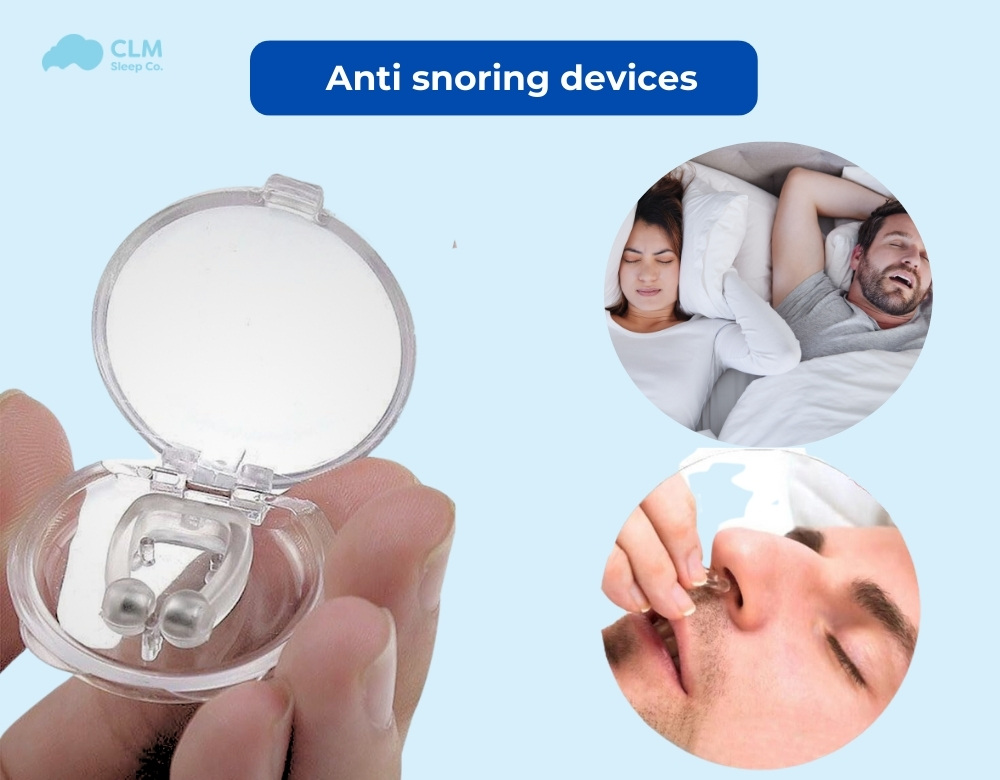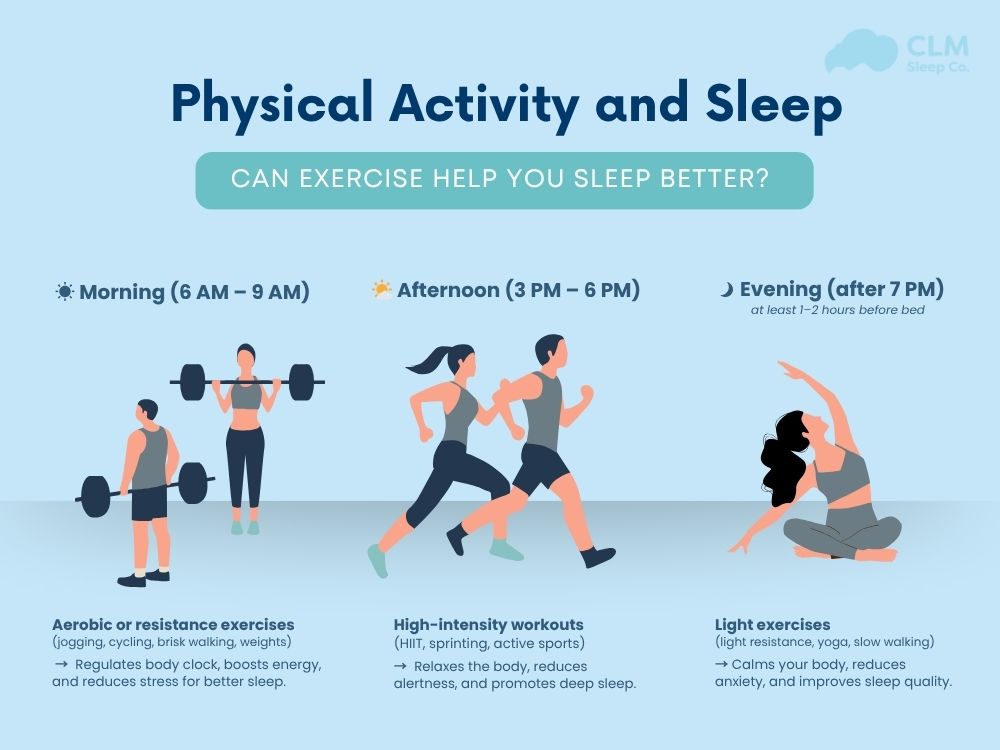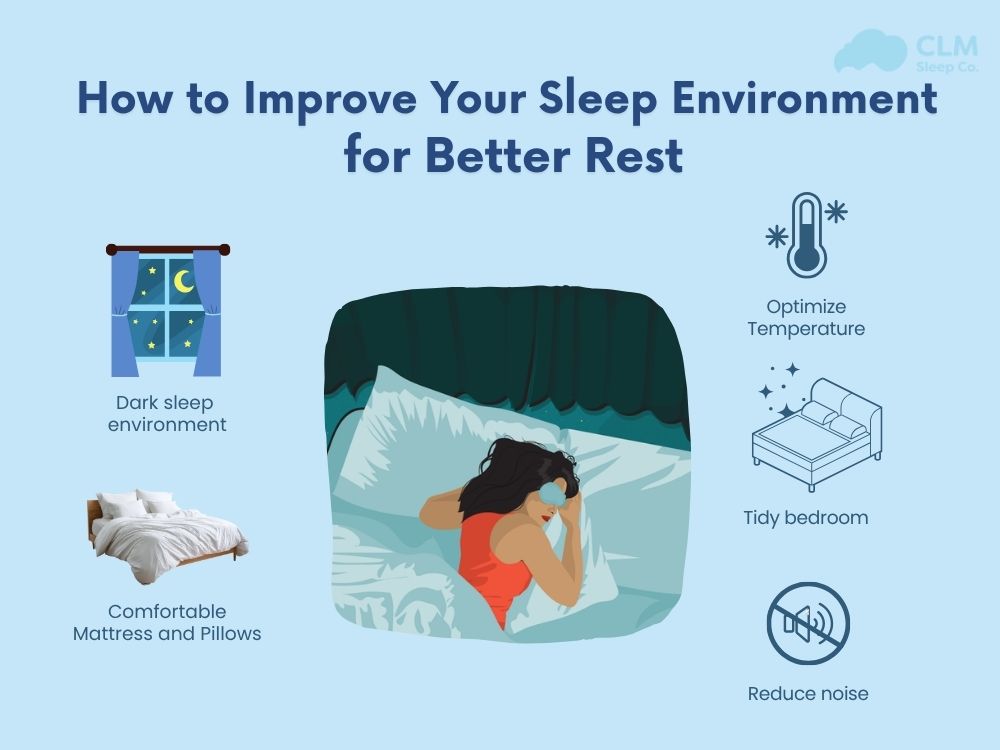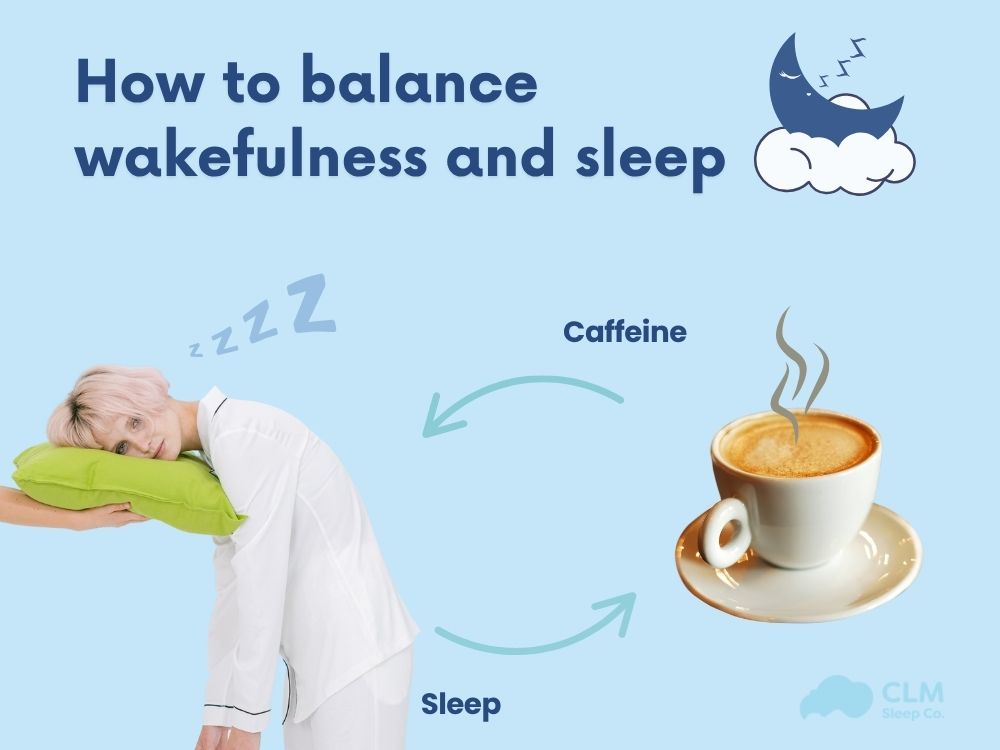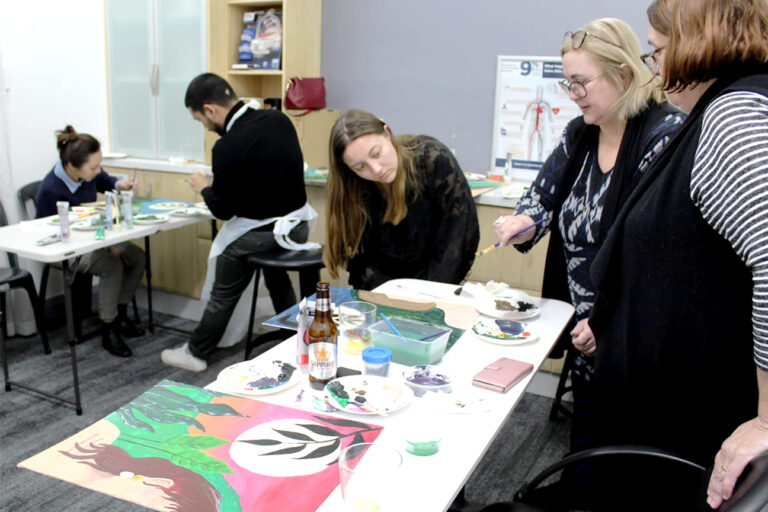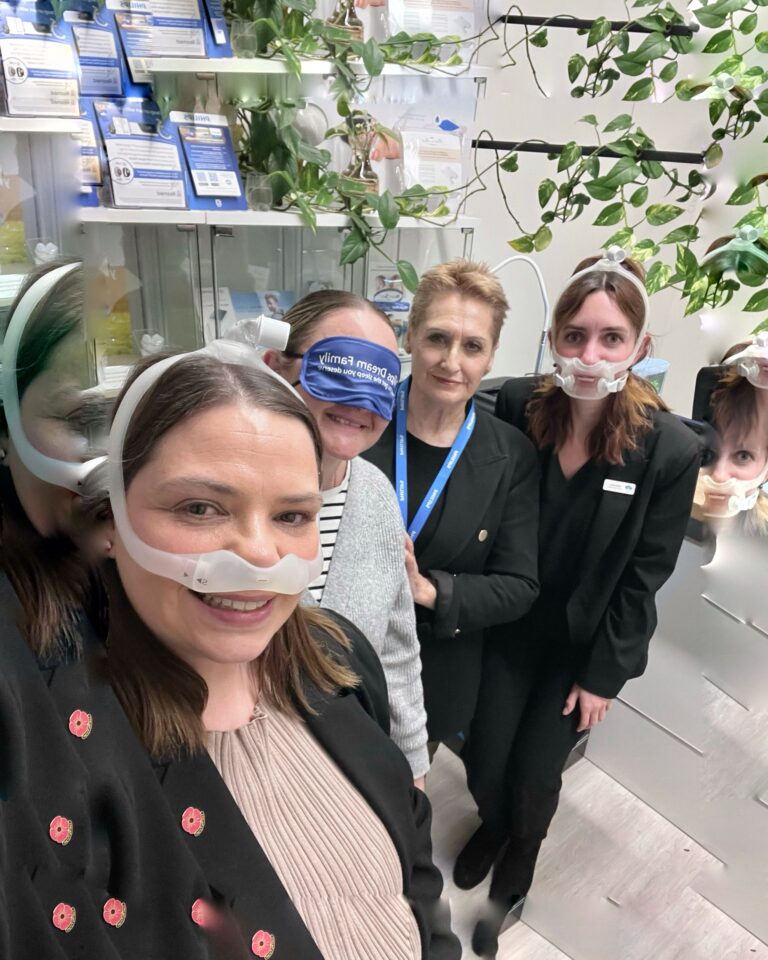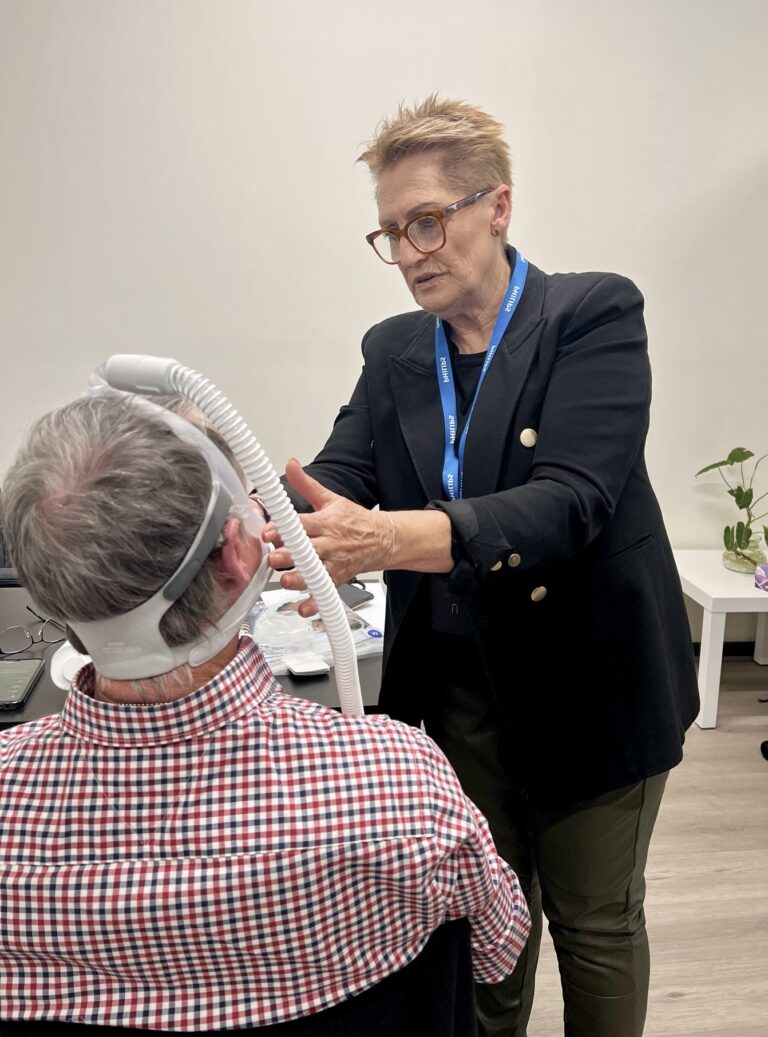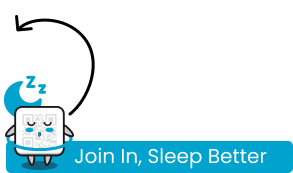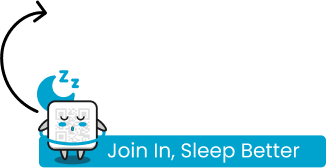Snoring is a fairly common condition, occurring in about 57% of men and 40% of women. Snoring can be harmless, but it can also be an underlying medical condition that needs treatment. Anti snoring devices are an effective method to stop snoring. Let’s find out with CLM Sleep in the article below!
Causes of Snoring
Why do people snore? Snoring is one of the principal symptoms of obstructive sleep apnea. Different types of snoring may also come hand in hand with other cardiovascular and respiratory pathologies. Here are several different causes of snoring:
- Age: Snoring is more frequent with age because of decreased muscular tone; the airways narrow further.
- Alcohol and Sedatives: Drinks containing alcohol and some drugs relax the musculature and constrict the airflow in the nose, mouth, and throat.
- Anatomy: Obstructive sleep apnea might result from the obstruction of airflow caused by swollen tonsils, oversized or big tonsils, and a large tongue. Airway obstructions can also be a result of a deviated septum, where the cartilage partitioning both nostrils is not aligned.
- Gender assignment at birth: More males have the tendency to snore, whereas females are protected against sleep apnea because they snore less.
- Family history: Snoring. Yes, it can run in families. But that’s not the reason it, um, runs in families. Rather, the incidence of snoring is that it’s more common in an individual who has one or both biological parents who snore(s) as compared to someone with no biological parent who snores.
- Overall health: Nasal congestion from either allergies or a cold blocks the free flow of air through your mouth and nose. Pregnant women are likely victims of snoring too because of hormonal changes.
- Weight: According to the American Academy of Sleep Medicine, the risks of snoring and other sleep-related breathing problems are higher in overweight people, with a body mass index over 25, and obese people, with a body mass index over 30.
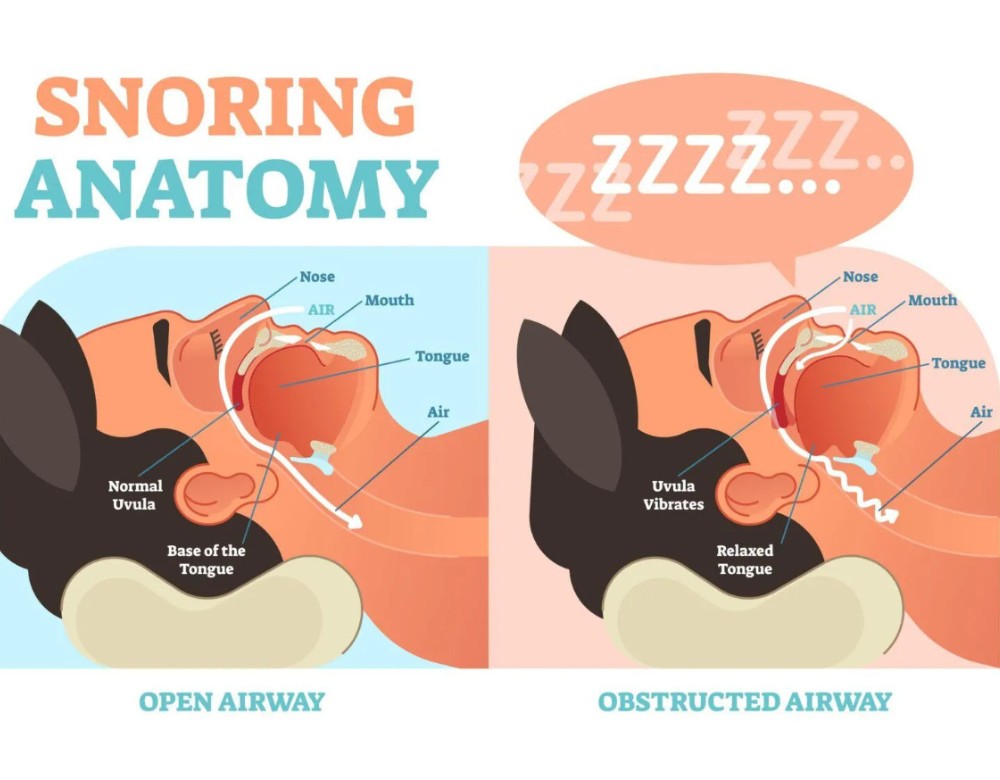
See more: Can You Have Sleep Apnea Without Snoring?
Common types of Anti-Snoring Devices
Mandibular Advancement Devices (MADs)
Mandibular advancement devices (MADs) are anti snoring devices Australia, custom-made oral appliances used to treat snoring by repositioning the lower jaw to open the airway during sleep. This prevents soft tissues in the throat from collapsing, improving airflow and reducing snoring or sleep apnea. MADs are frequently adjustable and usually substituted for therapy in cases where therapy has to be noninvasive to continuous positive airway pressure therapy.

MADs are usually administered to individuals who fall under the following categories:
- Patients who snore but do not have OSA
- Patients who find CPAP intolerable or cannot tolerate it
- People who want an easily transportable and easy-to-use device for treating sleep apnea
This option offers several advantages that make it a convenient and user-friendly choice for people looking to address snoring without complicated treatments:
- Effectively reduce snoring
- Simple, non-invasive, no need for complex machinery
- Easier to use and more comfortable than using CPAP machines
- It has a compact design, easy to carry anywhere.
While this solution can be effective for many, it also comes with certain drawbacks and limitations that users should consider before choosing it:
- Some people may experience jaw pain, discomfort in the teeth, or misaligned bite.
- Not effective for cases of snoring due to mild or moderate sleep apnea.
- It takes time to get used to the device. Custom-designed MAD can be very expensive, especially if not covered by insurance.
- Using the device incorrectly or using a device that does not fit the jaw will misalign the jaw and change the order of the teeth.
Read more: Snoring in Children: Causes and Solutions
Tongue Retaining Devices (TRDs)
Tongue Retaining Device — TRD is anti snoring devices that work that keep the airway open during sleep by holding the tongue forward and preventing it from collapsing into the throat. It works by using light suction to stabilize the tongue and keep the airway clear for complete breathing. TRDs (Unlike Mandibular Advancement Devices/MADs)
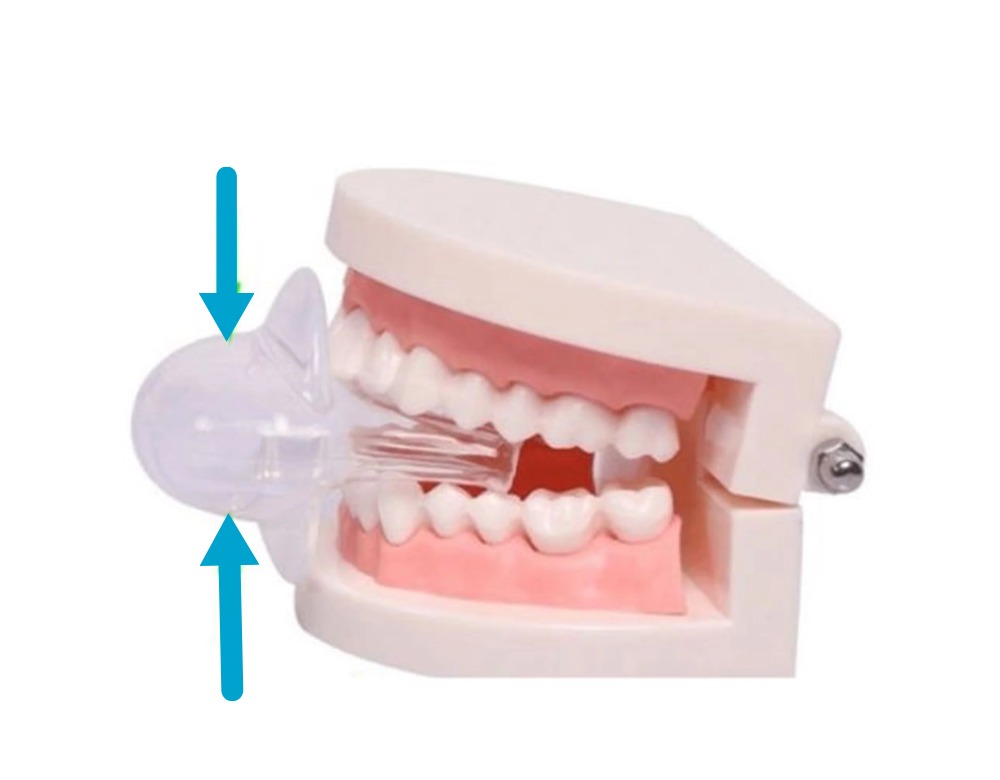
Tongue Retaining Devices (TRDs) are suitable for light to moderate Obstructive Sleep Apnea (OSA) or tongue-related snoring. These are typically a much better fit for patients who cannot use CPAP (Continuous Positive Airway Pressure) or have dental issues, as they do not require jaw repositioning to operate as MADs (Mandibular advancement devices).
Pros
- No surgery required: TRDs are much less invasive than CPAP machines and don’t involve any dental work.
- Simple to use: Not intensive in the settings, or calls for no complex machinery just plug and play which is perfect for travel.
- Targeted efficacy helps reduce snoring and mild to moderate OSA symptoms related to tongue-related airway blockade.
- The same with MADs, TRDs will not affect the jaw or teeth alignment so they are good for people who have jaw issues.
Cons
- Tongue Retention / Suction: The combination of tongue retention and suction can be uncomfortable for some users in the beginning stages.
- Heavy Drooling: The use of a TRD can illicit saliva during sleep, causing interruptions for some users.
- FAKE FAN TRDs are NOT indicated in patients with severe sleep apnea or airway obstruction that is NOT primarily tongue-based.
- This is where they encounter the sensation of tongue retention, which might disturb their sleep quality for a while.
See more: How To Stop Snoring Woman
Nasal Dilators
The nasal dilators are devices created to aid in the opening of the front part of the nostril and hence assist in synthesizing ease while breathing through our nose. There are essentially two types that they come in, external nasal strips as well internal intranasal inserts.
- External Nasal Strips: These adhesive strips are placed across the nose, lifting and pulling the sides of the nostrils outward, reducing nasal congestion.
- Internal Nasal Dilators: These are small, flexible devices inserted into the nostrils. They push the nostrils open from the inside, helping to improve airflow by reducing nasal resistance.
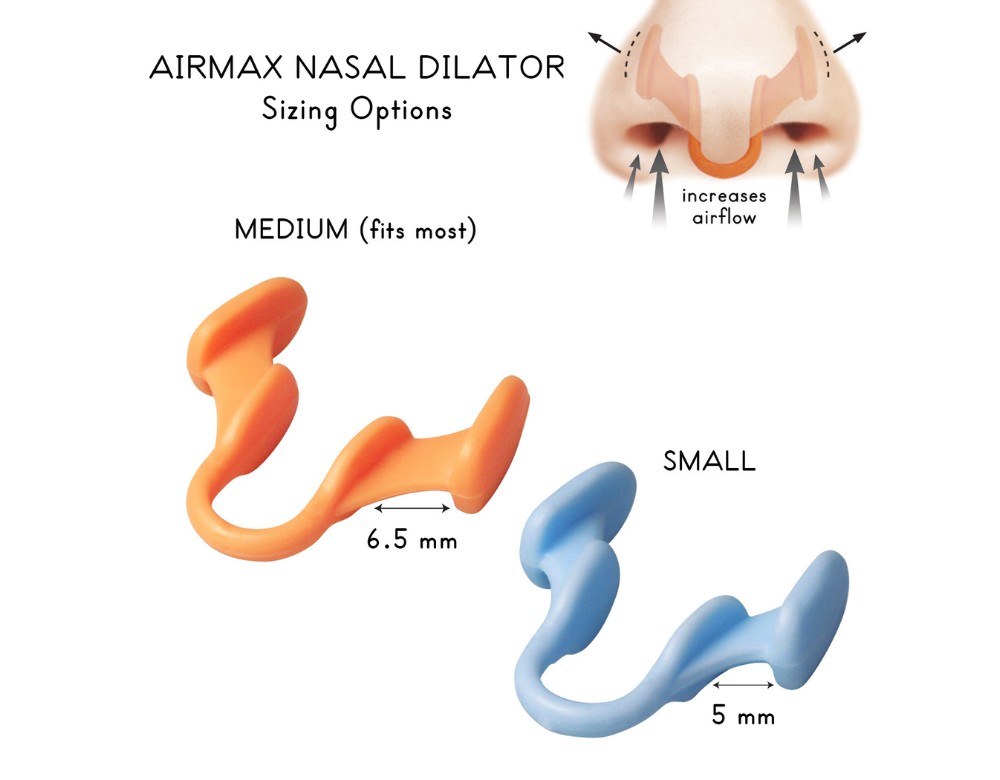
Who It’s For
Nasal dilators are typically used by individuals who experience difficulty breathing through their nose, particularly in the following scenarios:
- Snoring: People who snore due to nasal obstruction may benefit from nasal dilators, as they can help improve airflow and reduce snoring caused by blocked nasal passages.
- Sleep Apnea: While nasal dilators are not a cure for obstructive sleep apnea, they may help alleviate mild cases or complement other treatments like CPAP machines.
- Nasal Congestion: Those who suffer from nasal congestion due to allergies, colds, or sinus issues may find relief with nasal dilators, as they improve airflow.
- Athletes: Some athletes use nasal dilators to increase airflow during exercise, improving breathing efficiency and performance.
Pros
- Non-invasive: Nasal cannulas are a simple, non-invasive alternative to surgical methods to improve nasal airflow.
- Instant relief: They provide quick and significant relief from nasal congestion and difficulty breathing.
- Affordable: Nasal cannulas are relatively inexpensive compared to other treatments for breathing problems.
- No medication required: Since nasal cannulas are drug-free, they can be used without worrying about drug interactions or side effects.
- Portable: They are small, lightweight, and easy to carry, making them convenient for traveling or on-the-go use.
Cons
- Limited effectiveness for severe problems: Nasal cannulas may not be effective enough for severe nasal congestion or conditions like moderate to severe sleep apnea.
- Uncomfortable: If the user is not used to inserting the device into the nostril, the nasal cannulas inside may cause discomfort.
- Temporary solution: Nasal cannulas only provide temporary relief from symptoms; They do not treat the underlying cause of sleep apnea or chronic nasal obstruction.
- Adhesive irritation: The adhesive in external nasal strips can cause skin irritation or discomfort, especially after long-term use.
- Variable effectiveness: Depending on the specific cause of nasal obstruction in each person, nasal dilators may have varying degrees of effectiveness.
CPAP Machines
According to a study published in the Journal of Clinical Sleep Medicine (2017), “Low-level CPAP below the range required to treat OSA diminished nocturnal snoring, and produced uniform reduction in nightly noise production below the World Health Organization’s limit of 45 dBA”. By maintaining a steady flow of air through a mask, CPAP devices help people with sleep apnea by keeping their airways open and preventing collapse. They include adjustable pressure settings to ensure adequate ventilation while you sleep
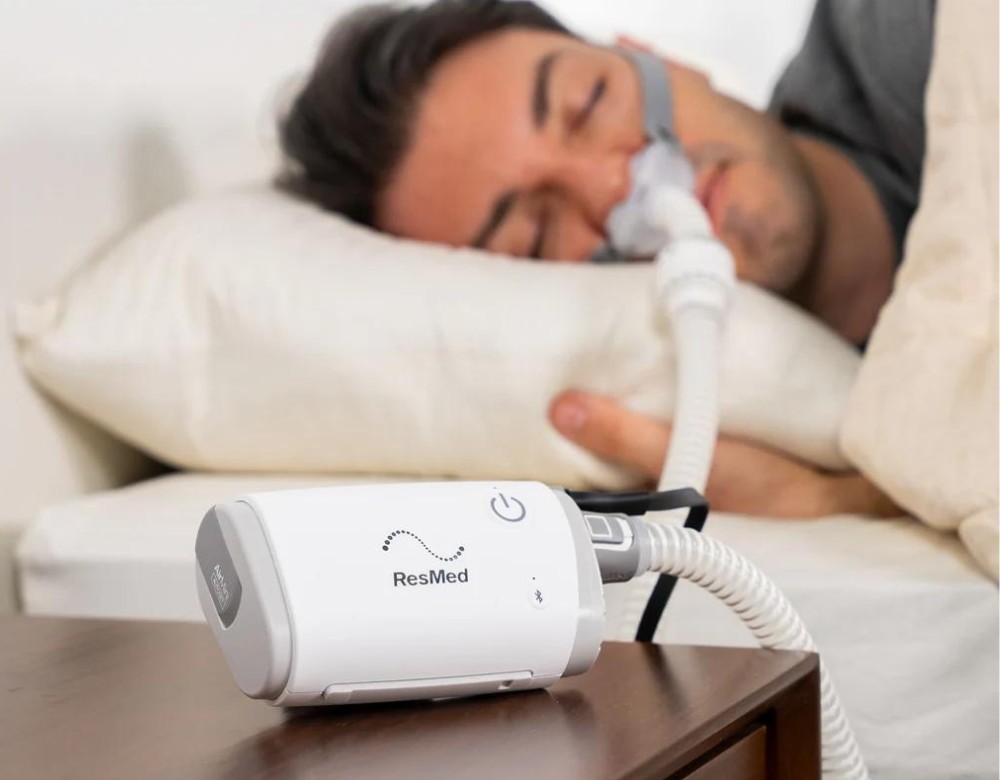
CPAP is commonly prescribed for individuals with sleep apnea, a condition characterized by excessive relaxation of the throat muscles during sleep, leading to airway obstruction. In addition, low-level CPAP is also suitable for:
- Loud snorers diagnosed with sleep apnea.
- Who feels fatigued when their sleep is disrupted
- Patients need breathing assistance due to severe respiratory issues.
Pros and Cons of CPAP machines
For individuals who struggle with chronic snoring, CPAP machines can provide more than just quieter nights. They can also improve sleep quality and overall health. Key benefits include:
- Significantly reduces symptoms such as snoring and daytime sleepiness.
- Improves sleep quality by increasing deep sleep and REM sleep.
- Reduces the risk of serious health conditions such as high blood pressure, heart disease, and stroke.
- Smart and modern, with adjustable pressure and humidity settings for optimal comfort.
While CPAP machines offer many benefits, they also come with certain drawbacks that users should consider before starting therapy:
- Wearing a mask throughout the entire sleep period can cause discomfort.
- The machine produces noise, not excessively loud, but for new users, it may disturb sleep until they become accustomed to it.
- It’s important to understand how to operate the machine and follow the CPAP therapy correctly.
- Regular maintenance and cleaning are required to prevent mold and bacteria growth.
- Most CPAP machines on the market today come with a built-in humidifier; however, some models still lack this feature, which can cause dryness and irritation in the airways. You can purchase an additional humidifier for a more comfortable experience.
- The cost is relatively high, ranging from $500 to $2,500 in the current market.
Chin Straps
Chin straps are elastic or adjustable fabric bands that secure the chin and jaw. They are used for:
- Sleep Apnea and Snoring: Keep the mouth closed to promote nasal breathing and reduce snoring in mild cases.
- Facial Sculpting and Anti-Aging: Support the jawline and neck to prevent sagging and enhance firmness.
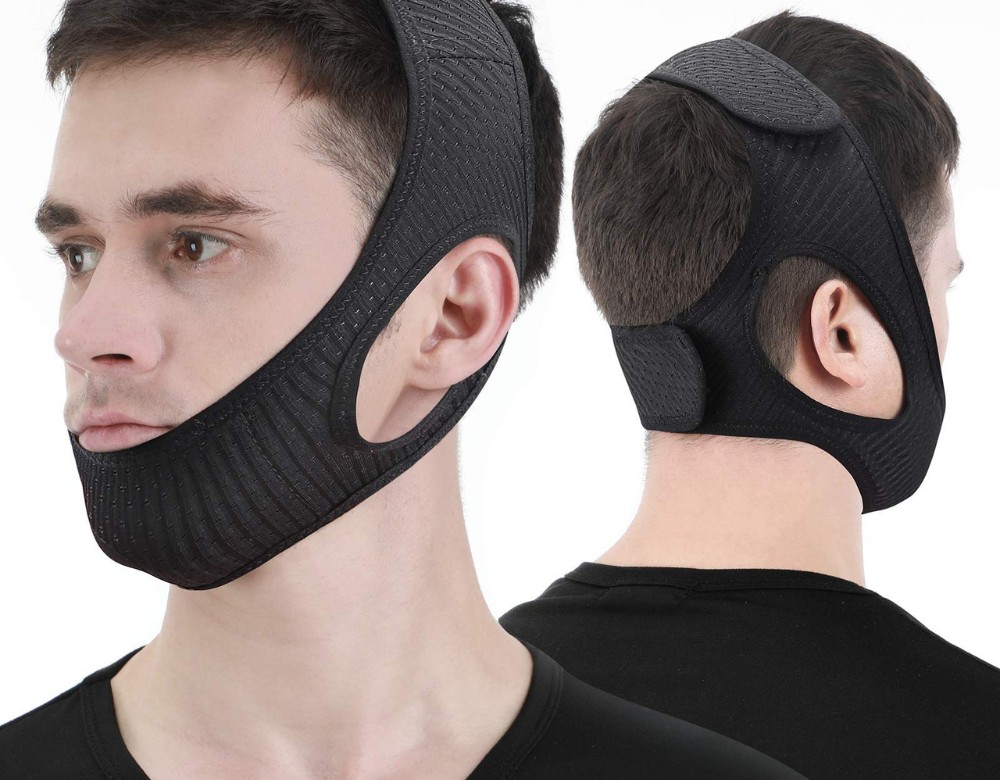
Who It’s For:
- Sleep Apnea and Snoring: Individuals with mild sleep apnea and those who snore due to open-mouth breathing.
- Anti-Aging and Skincare: People looking to improve jawline firmness and delay aging without surgery.
Pros:
- Non-Invasive: Simple, no medical procedures required.
- Affordable: Less expensive than CPAP machines or cosmetic treatments.
- Portable and Easy to Use: Lightweight and convenient for daily wear.
- Skin Lifting Benefits: May enhance jawline firmness over time.
Cons:
- Limited Effectiveness: Not suitable for moderate to severe sleep apnea.
- Temporary Results: Anti-aging effects are not permanent.
- Discomfort: Some may find them uncomfortable for extended use.
- Adjustment Period: Users may need time to get used to wearing them.
Positioning Devices
Positioning devices are safety tools that secure workers for hands-free operation at heights, commonly used in construction and telecommunications. They include harnesses, lanyards, and anchorage connectors, limiting movement to prevent falls while allowing task movements.
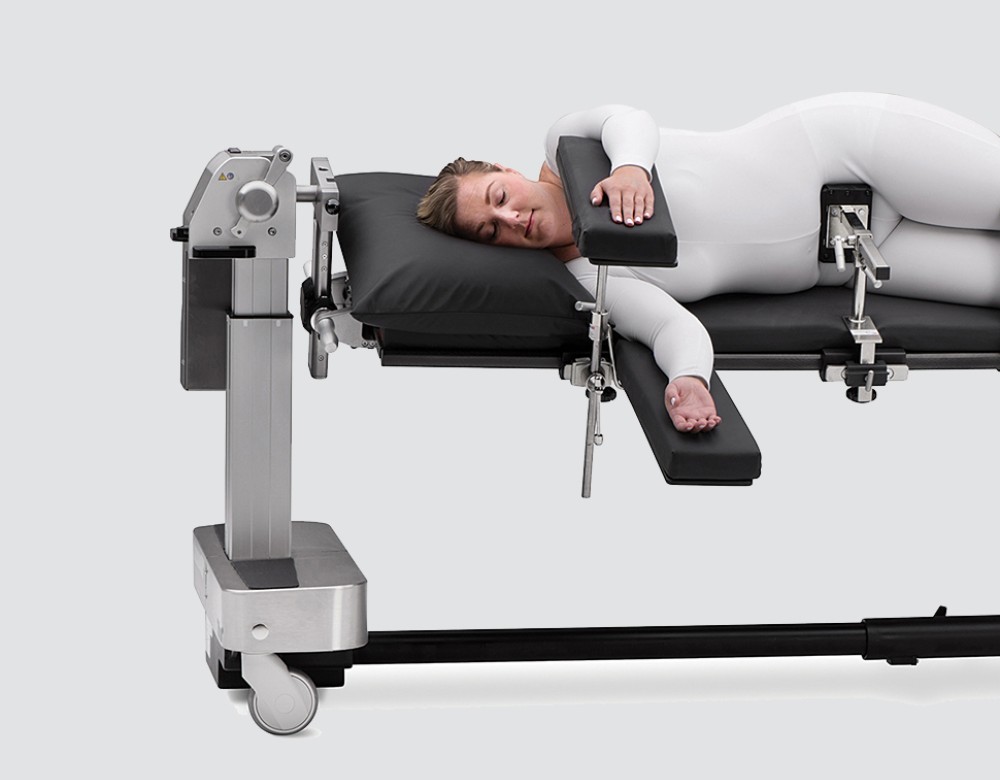
Who It’s For
- Construction workers
- Utility linemen
- Window cleaners
- Arborists
- Telecom tower technicians
Pros:
- Enhanced Safety: Reduces fall risk.
- Hands-Free Operation: Improves efficiency.
- Improved Stability: Provides balance in high positions.
- Flexibility: Adjustable for secure positioning.
- Durable Construction: Made to withstand harsh conditions.
Cons:
- Limited Mobility: Movement is restricted to lanyard length.
- Not a Fall-Arrest System: Requires additional fall protection.
- Requires Training: Workers need proper training for use.
- Comfort Concerns: Possible discomfort with extended wear.
- Dependence on Anchorage Points: Needs secure points for use.
See more: The Best Sleeping Position
Nasal Strips
Adhesive strips are the best anti snoring device Australia, applied on the nose gently lift the nasal passages to improve airflow, reducing congestion from colds, allergies, and deviated septums. They help decrease snoring and enhance athletic performance.
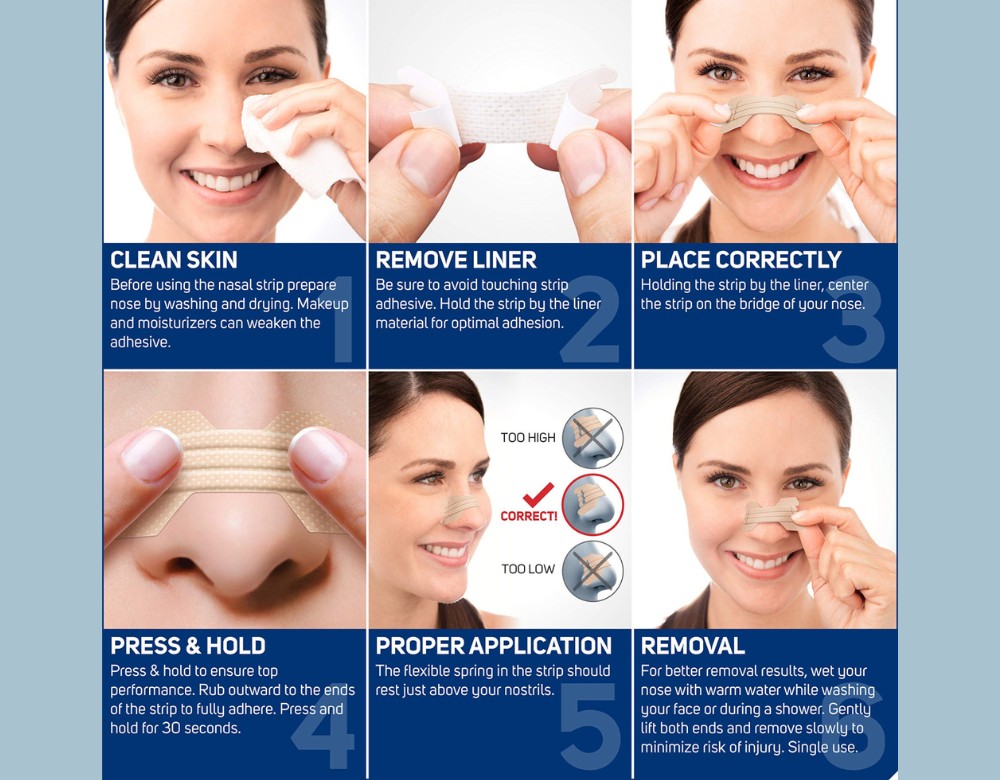
Who It’s For:
- People with nasal congestion (colds, sinus infections, or allergies)
- Snorers seeking a non-invasive solution
- Athletes wanting improved breathing during activities
- Individuals with deviated septums
Pros:
- Non-invasive and drug-free
- Immediate relief from congestion and snoring
- No side effects associated with medications
- Affordable and easily accessible over-the-counter
Cons:
- Temporary relief (only effective while in place)
- Limited effectiveness for severe respiratory issues
- Possible skin irritation from the adhesive
- Not a cure for underlying causes of congestion or snoring
Special Pillows
Special pillows offer targeted support and comfort for pressure relief; they work for spinal alignment and discomfort. Most of them are made of memory foam and some gel-infused layers—they adjust to body contours and support specific sleep positions or health concerns to improve sleep quality.
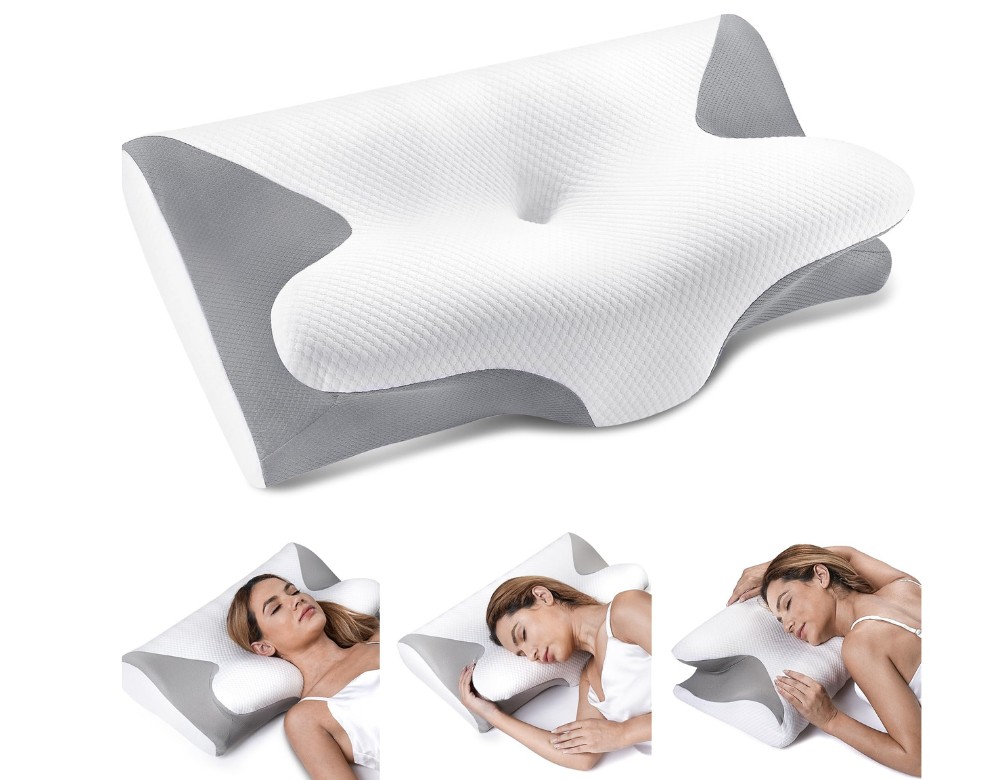
Who It’s For:
- Those with neck and back pain or sleep apnea
- Side, back, or stomach sleepers who desire prime alignment
- Allergy sufferers (some are labeled hypoallergenic)
- Anyone who wants tailored comfort for a better night’s rest
Pros:
- Improves sleep posture and reduces discomfort
- Relieves symptoms of conditions like sleep apnea and joint pain
- Variety of materials for cooling and pressure relief
- Hypoallergenic options to reduce exposure to allergens
Cons:
- Higher cost than a standard pillow
- Comfort may take a little time for adjust
- Some material wears and flattens over time
- Not a pillow for everyone; finding just the right one may be tough
Pros and Cons of Anti-Snoring Devices
Pros
Some benefits of anti snoring gadgets are as follows:
- Enhances the quality of sleep
- Possess a range of snoring remedies at your disposal, including CPAP machines, nasal strips, and mouthpieces. Users can select the one that best suits their needs and comfort level thanks to this.
- Since anti-snoring devices are non-invasive, snoring can be reduced without surgery or medicine.
- In general, anti-snoring devices are less expensive than other medical interventions.
- The majority of gadgets are portable, lightweight, and simple to operate.
- By supporting unbroken sleep, these devices can improve your health so well.
Cons:
Cons of anti-snoring gadgets include the following:
- Issues with Comfort: Mouthpieces are one such item that some users may find uncomfortable, especially if they use them all night. It can take time to adjust to wearing them.
- Effectiveness Varies: Not all devices work for everyone. The effectiveness of anti-snoring devices depends on the underlying cause of snoring, such as nasal obstruction, sleep apnea, or throat muscle relaxation.
- Maintenance: Many devices, particularly mouthpieces, require regular cleaning to avoid bacteria buildup, which adds to their upkeep.
- Short-Term Solution: Some devices offer temporary relief from snoring but don’t address the root cause, meaning snoring can return if the device is not used consistently.
- Potential Side Effects: Certain devices, such as mandibular advancement devices, may cause jaw pain, teeth movement, or dry mouth over time.
- CPAP Discomfort: Continuous positive airway pressure (CPAP) machines, although highly effective for sleep apnea, can be cumbersome, noisy, and uncomfortable, leading some users to discontinue use.

How to Choose the Right Anti-Snoring Device
Here are five factors to consider when determining which anti-snoring device is right for you:
- Read Recommendations and Reviews: Check consumer feedback and third-party reviews to gauge the effectiveness and satisfaction levels of various devices. This information can provide valuable insights into what works best.
- Cost Factor: While finding a functional product is crucial, consider the cost of the device and any replacements. A device that requires frequent replacements can add up over time.
- Comfort: Comfort is essential, as more invasive devices may be harder to tolerate. Look for options that fit comfortably and don’t disrupt your sleep.
- Transportability: Choose a device that is easy to travel with. Since snoring doesn’t stop when you’re on vacation, a portable solution ensures you can maintain your sleep routine anywhere.
- Return Policy: Opt for products with a risk-free return policy, ideally a 100% money-back guarantee. This reflects the manufacturer’s confidence in their product and provides you with assurance when making your purchase.
Benefits of Reducing Snoring for Health
Here are the benefits of reducing snoring for health
- Improve Your Sleep: Treating sleep apnea restores your sleep cycle for uninterrupted rest.
- Feel More Awake: Addressing sleep apnea boosts daytime alertness and reduces fatigue.
- Boost Your Health: Treatment enhances overall health and energy, reducing risks of serious conditions.
- Enhance Relationships: Treating sleep apnea improves sleep quality for both partners, reducing snoring.
- Diagnosis: Doctors assess symptoms and medical history, potentially recommending tests.
- Treatment Options: Various treatments reduce apnea episodes and improve well-being, significantly lessening sleep apnea’s impact.
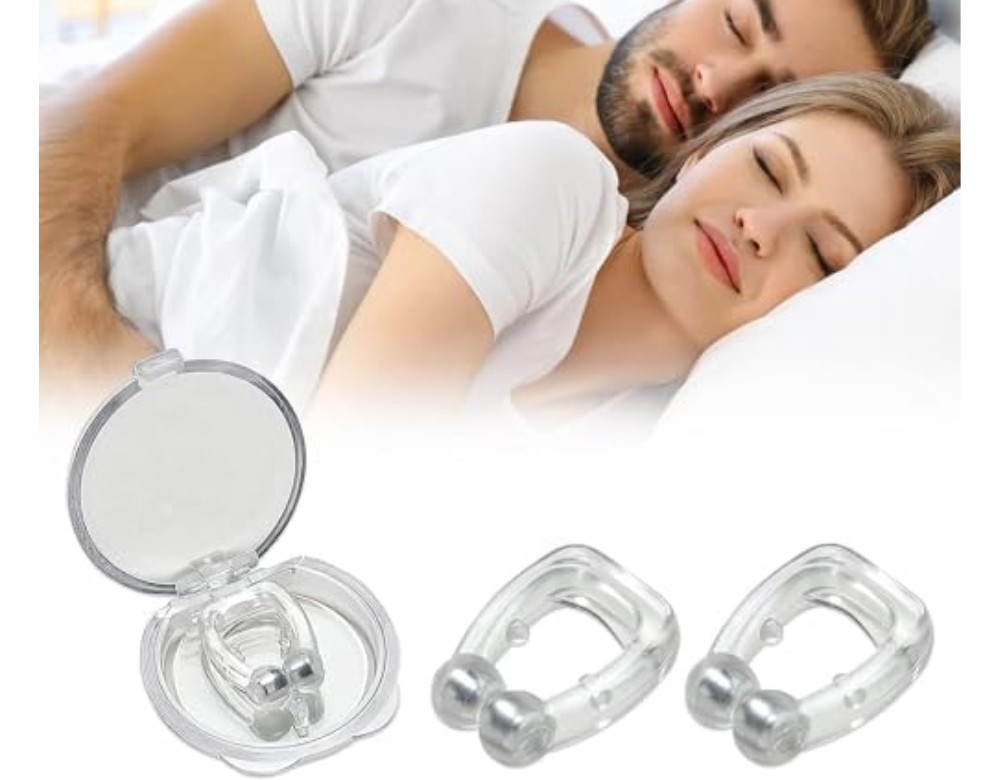
Read more: Sleep Apnea Self-Care: Tips for Managing Your Condition
Conclusion of the article
In summary, anti snoring devices provide an effective solution for those struggling with snoring. You can search for “anti snoring devices near me” or “anti snoring device reviews” to make decide to buy one suit for you.
Reference
1. Ioerger P, Afshari A, Hentati F, Strober W, Kallogjeri D, Ju Y-E, Piccirillo JF. Mandibular Advancement vs Combined Airway and Positional Therapy for Snoring. JAMA Otolaryngol Head Neck Surg. 2024 May 23;150(7):572–579. doi: 10.1001/jamaoto.2024.1035. PMID: 38780959; PMCID: PMC11117146.
2. Yu, L., Mao, R., Zhang, C., Zhao, J., Lin, N., Sun, Z., & Zheng, Y. (2024). Clinical study of two mandibular advancement devices in the treatment of Obstructive Sleep Apnea: A pilot randomized controlled trial. BMC Oral Health. 2024 Dec 18;24(1):1492. doi: 10.1186/s12903-024-05289-0. PMID: 39696299. PMCID: PMC11658169
3. Guzman, M. A., et al. The efficacy of low-level continuous positive airway pressure for the treatment of snoring. Journal of Clinical Sleep Medicine. 2017 May 15;13(5):703–711. doi: 10.5664/jcsm.6588. PMCID: PMC5406953 PMID: 28356182
